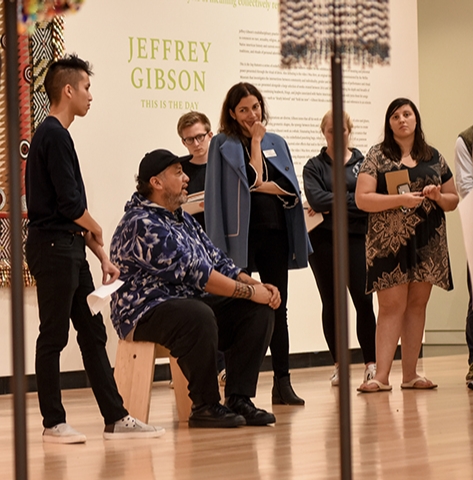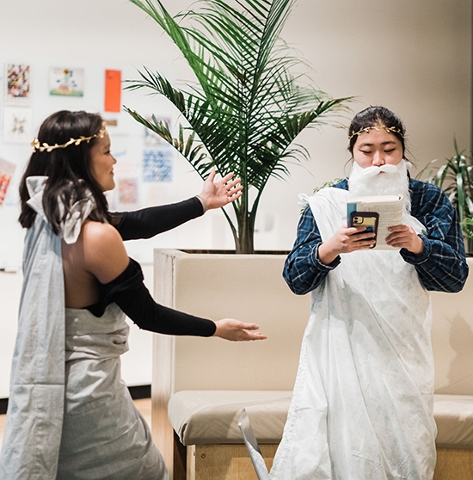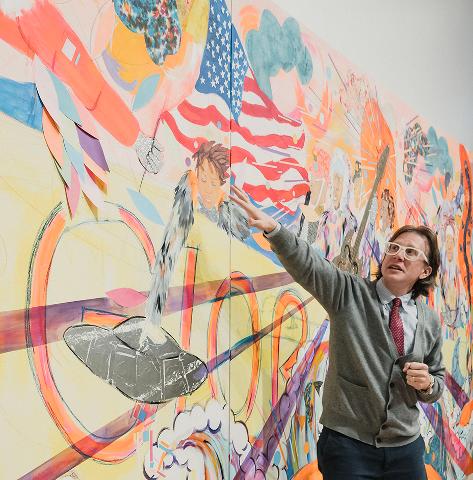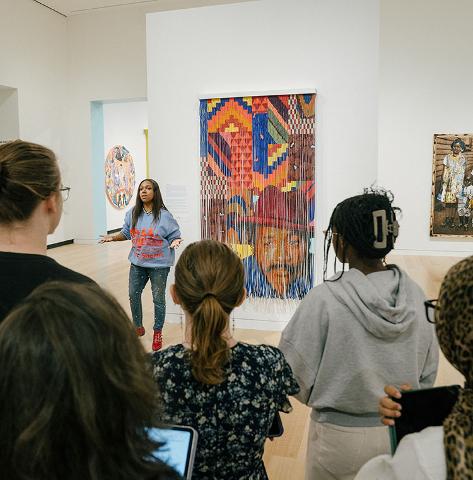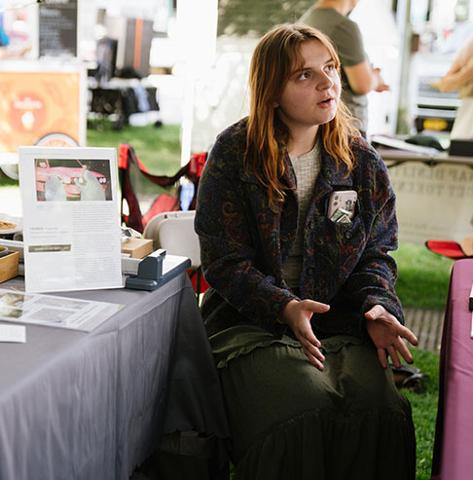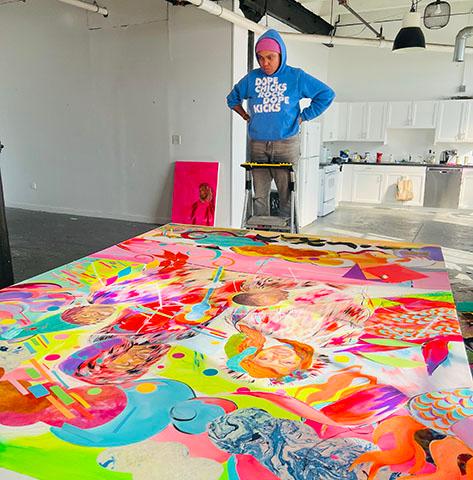Janelle Rodriguez
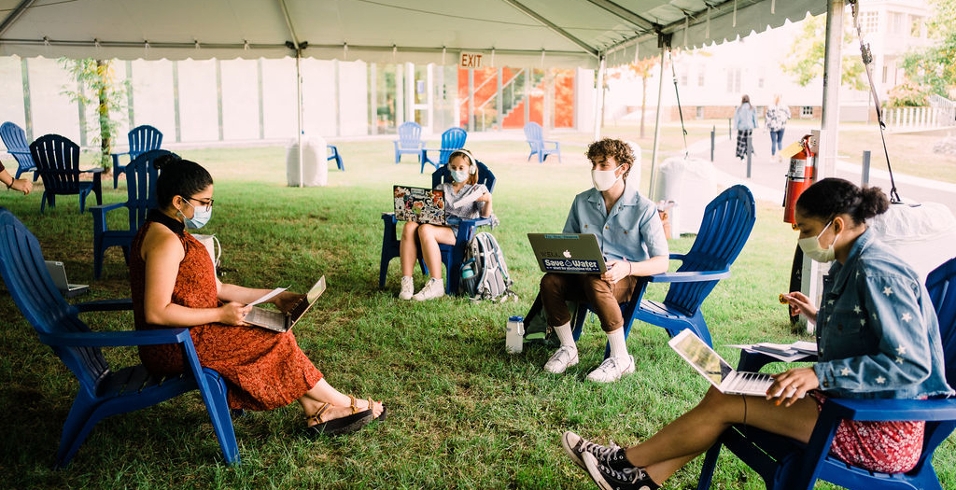
When I was asked to contribute a blog article commenting on the ways we are adapting our teaching at the museum during the pandemic, I immediately thought about a phone conversation I had a few weeks ago. My friend had just moved over a thousand miles away from her home to begin a Master’s program in art therapy and I was curious to know how she felt about taking such an exciting yet daunting step in the midst of a pandemic. By the end of our conversation I got the sense that she felt it was exactly because of all the stress we are currently feeling as a society—from the frustrations of racial inequality to the fears of becoming infected with a potentially fatal disease—that it was more vital than ever to use art and culture as a means of therapy and recovery, even if it was virtual. I hung up the phone feeling somewhat inspired and hopeful about the importance of art, though no less clear about how I would be changing my own approach to student and faculty engagements for the coming semester.
So then I turned to a short text by Pulitzer-prize winning author Hisham Matar for the New York Times Magazine called Something Happens When You Fall. Written during some of the darkest days of the pandemic in late May of this past year, Matar’s story also involved a conversation about the art world with a friend—curator Caroline Campbell at the National Gallery in London. Over the course of a few pages and using a comparison between the seemingly disparate objects of an 18th century Thomas Gainsborough painting and a set of 20th century photographs by Willi Ruge, Matar raised some questions that were similar to the ones going through my own mind:
“When the art in the museum is inaccessible, what happens to it and what happens to us? Have we not observed how a picture can suddenly become significant to our culture while another, equally good, perhaps even better, recedes from out attention? And does this not prove that art is in constant dialogue with history?”
Matar’s work helped me realize that there is no substitute for being in the presence of an object though my previous phone conversation had reassured me that even virtual points of engagement with art could be valuable. All of this in turn helped inform the perspective I brought to conversations with my colleagues about the scope of our efforts in the coming academic year. Everyone on the staff has added their own thoughts to this dialogue and I’m pleased to share a few highlights of our initial work:
- We’re focusing on the now, but with an eye to the future.
The Wellin has reopened to Hamilton students, faculty, and staff by appointment. We regret that we can’t welcome the general public as usual, but we’re carving out more time as a staff for professional development, learning about best practices and listening to the campus community to gain new ideas about programs and accessibility. The idea of “listening” may seem overly simple, but it is some of the most important work we can undertake right now.
- We are not adopting a one-size-fits-all solution.
This fall we are welcoming back classes that meet in-person, remotely, or as a hybrid of the two. That means we are designing each class engagement specifically to meet the needs of student learning. We are now arranging collection objects in vitrines or study rooms so individuals as well as small groups can still access them. In the exhibition gallery we will be conducting tours for small groups that are simultaneously shown via Zoom to remote students. For many of the remote classes, we will be widening our discussion of collection objects during virtual visits—using more visual resources and slideshows over the computer than we might usually offer during an in-person visit. If an object is not in front of you, it can be hard to discuss its materiality, so we are using the format of virtual learning to talk more about how objects relate to other parts of culture and history instead.
- We are increasing programming and virtual resources.
Our next exhibition, Michael Rakowitz: Nimrud, will be on view for several more months than in a normal year, and we’re increasing the accompanying programming accordingly. That means we will be able to hear from more voices about the topics raised by the exhibition and, since they will be offered virtually, we are hoping to reach more audiences. We have also worked to provide more digital resources about the artist to our faculty, including the creation of a digital version of the exhibition catalog, and have recently refreshed the Collections tab on the Wellin’s website. We are curious to know what types of digital programming are sustainable and relevant to our community, so we will be evaluating the efficacy of our efforts at the end of the spring semester.
This fall, I am grateful that we will still safely be able to offer some individuals an experience in the presence of physical objects. At the same time, I am excited to offer other students and faculty virtual conversations about art with artists, writers, and Wellin staff. This will be a busy year for the Wellin of experimenting, learning, and evaluating. As Lonnie G. Bunch III, Secretary of the Smithsonian Institution, said in his recent address to attendees of the AAM Virtual Annual Meeting: “This is a new day. The pandemic will not go away like a light switch. Learn from the past and respect it. Remember our losses and who we are, and embrace the opportunity to do the work.” It’s exciting to think what things might look different when we do resume normal operations at the Wellin.


